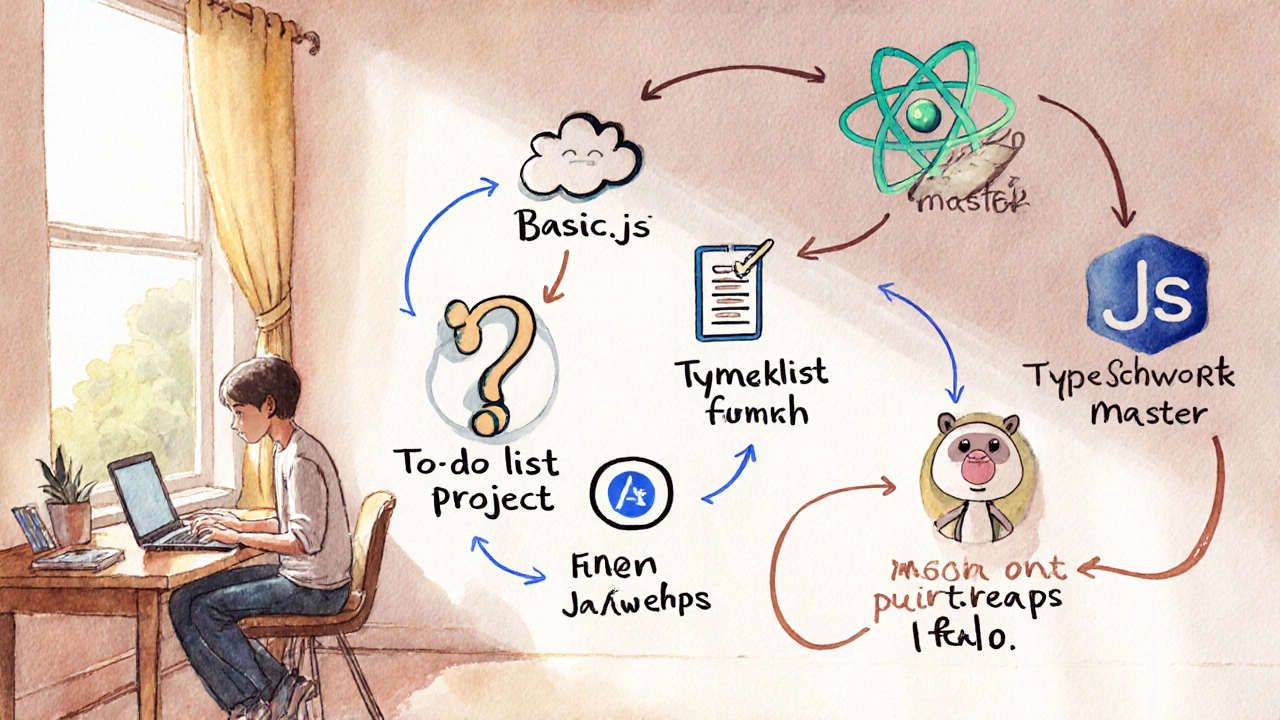JavaScript Developer Salary Calculator
Estimate Your JavaScript Developer Salary
Based on 2024 market data from Glassdoor and Payscale
When you JavaScript is a high‑level, interpreted programming language that powers the dynamic behavior of web pages, you instantly tap into the engine that runs 98% of all browsers. In 2024 that power isn’t fading - it’s expanding. learn JavaScript now means joining a community of millions, unlocking remote jobs, and staying relevant as the web evolves.
1. Market demand: JavaScript dominates the job board
According to the 2024 Stack Overflow Developer Survey, JavaScript ranks #1 in both usage (71% of respondents) and desire to learn (64%). Companies from startups to Fortune 500 giants list JavaScript as a required skill for frontend, backend, and even data‑science roles. The US Bureau of Labor Statistics projects a 22% growth in web‑development positions over the next decade, and JavaScript expertise sits at the core of that surge.
2. A thriving ecosystem - more than just a browser language
Modern Node.js a server‑side runtime that lets JavaScript run outside the browser lets you build APIs, micro‑services, and full‑stack applications with a single language. On the frontend, libraries like React a component‑based UI library maintained by Meta and frameworks such as Vue.js a progressive JavaScript framework for building UI dominate the market, each backed by vibrant communities and corporate sponsorship.
Because the ecosystem is so extensive, learning JavaScript opens doors to roles like Frontend Engineer, Full‑Stack Developer, Mobile Developer (via React Native), and even DevOps Engineer (with tools like Docker and Kubernetes that accept JavaScript‑based plugins).
3. Salary upside and career flexibility
Glassdoor’s 2024 salary data shows median base pay for "JavaScript Developer" at $115,000 in the United States, with senior positions crossing $150,000. A 2024 Payscale report highlights a 12% premium for developers who also know TypeScript a strict syntactic superset of JavaScript that adds static typing. This means that once you master core JavaScript, adding TypeScript can boost your market value without a steep learning curve.

4. Modern language features keep JavaScript fresh
The ES2024 (ECMAScript 2024) specification introduced several game‑changing features:
- Pattern matching - a more expressive way to destructure objects and arrays.
- Temporal - a proposal for a robust date‑time API that replaces the quirky
Dateobject. - Private class fields - true encapsulation for object‑oriented code.
5. Learning resources - everything you need is free or affordable
The definitive reference site, MDN Web Docs Mozilla’s comprehensive documentation for web technologies, offers up‑to‑date tutorials, interactive examples, and browser compatibility tables. Community hubs like GitHub the largest code‑hosting platform where open‑source JavaScript projects live let you inspect real‑world code, contribute to libraries, and build a portfolio. When you hit a snag, Stack Overflow the Q&A site for programmers has answers for virtually every error message you’ll encounter.
Free courses from freeCodeCamp, The Odin Project, and Codecademy’s “Learn JavaScript” track provide hands‑on exercises. If you prefer structured learning, Udemy and Coursera host paid courses that often go on sale for under $15.
6. How JavaScript stacks up against other languages for web work
| Metric | JavaScript | Python | Ruby |
|---|---|---|---|
| Popularity (GitHub repos) | 68% | 22% | 5% |
| Average salary (US) | $115k | $108k | $102k |
| Framework maturity | React, Angular, Vue (all 5+ years) | Django, Flask (4-6 years) | Rails (13 years) |
| Learning curve | Medium - async concepts, prototypal inheritance | Easy - clear syntax, strong libraries | Medium - Ruby’s “magic” can be confusing |
While Python shines in data science and Ruby still powers legacy SaaS apps, JavaScript remains the only language that runs natively in the browser. That universality alone makes it the smartest first investment for anyone eyeing a web career.

7. Debunking common myths
Myth 1: "JavaScript is only for front‑end tricks." Modern JavaScript, thanks to Node.js, powers server‑side APIs, command‑line tools, and even desktop apps via Electron.
Myth 2: "It’s too messy - I should learn a “cleaner” language first." ES2024’s syntax improvements (optional chaining, nullish coalescing, pattern matching) have dramatically reduced boilerplate and bugs. Pair JavaScript with TypeScript and you get static type checking without abandoning the language’s flexibility.
Myth 3: "Web development is dying - focus on mobile or AI." Mobile apps built with React Native and progressive web apps (PWAs) rely on the same JavaScript foundations. AI front‑ends also need JavaScript to visualize results.
8. Action plan - start learning JavaScript today
- Set up your development environment: install Node.js (includes npm) and a code editor like VS Code.
- Complete the “JavaScript Basics” module on MDN - focus on variables, functions, and control flow.
- Build a tiny project: a to‑do list that stores items in
localStorage. This reinforces DOM manipulation and browser APIs. - Advance to async patterns: fetch data from a public API (e.g., GitHub users) using
fetchandasync/await. - Pick a framework - React is a safe bet. Follow the official tutorial and deploy your app on GitHub Pages.
- Add TypeScript to your project to experience static typing.
- Showcase your work on GitHub, write a brief README, and share the repo on Stack Overflow or Dev.to for feedback.
- Apply for junior positions or freelance gigs; emphasize your full‑stack JavaScript skill set.
Following these steps will get you from zero to employable in roughly three months if you commit 10-15 hours per week.
Key Takeaways
- JavaScript powers 98% of browsers and a growing server‑side ecosystem.
- 2024 introduces powerful language features (pattern matching, Temporal).
- Demand and salaries for JavaScript developers continue to rise.
- Rich, free resources (MDN, freeCodeCamp, GitHub) make learning accessible.
- Combining JavaScript with TypeScript, React, or Node.js creates a full‑stack skill set.
Is JavaScript still relevant for new developers in 2024?
Absolutely. It remains the only language that runs natively in every web browser, and its ecosystem (Node.js, React, TypeScript) expands daily, keeping it at the forefront of web and mobile development.
Do I need to learn a framework before mastering JavaScript?
Start with core JavaScript concepts - variables, functions, async patterns. Once comfortable, pick one framework (React is most market‑friendly) to apply those fundamentals in real projects.
How long does it take to become job‑ready?
With a focused schedule of 10-15 hours per week, most learners reach a junior‑ready level in 3-4 months by building portfolio projects and contributing to open‑source.
What salary can I expect as a JavaScript developer?
In the US, median base pay hovers around $115,000. Senior roles or specialists with TypeScript and React expertise can earn $150,000+.
Are there free resources to learn JavaScript?
Yes. MDN Web Docs, freeCodeCamp, The Odin Project, and YouTube channels like Traversy Media provide comprehensive, no‑cost curricula.





